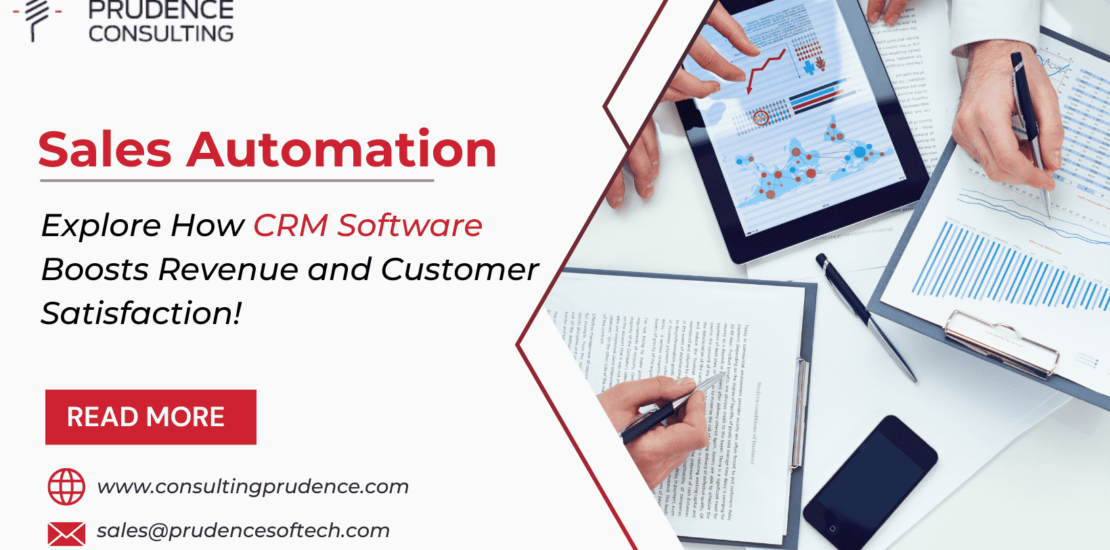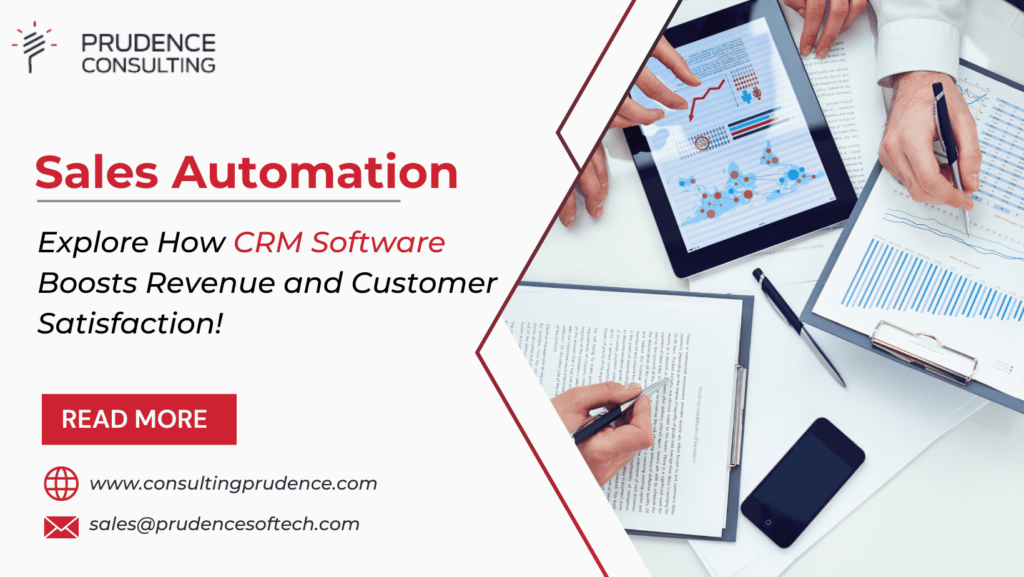Sales Automation: How CRM Software Boosts Revenue and Customer Satisfaction
-
December 19, 2023
- Posted by: piyush.gupta@prudencesoftech.in
- Category: Manufacturing Business
No Comments

- December 19, 2023
- Posted by: piyush.gupta@prudencesoftech.in
- Category: Manufacturing Business


In the rapidly evolving landscape of sales, customer relationship management (CRM) software has emerged as a game-changer. Its impact extends far beyond merely organizing contacts and streamlining workflows; it plays a pivotal role in boosting revenue and elevating customer satisfaction. In this blog, we delve into the ways CRM software serves as a catalyst for sales automation and its profound effects on businesses.
Understanding CRM Software
At its core, CRM software serves as a centralized hub where businesses can manage interactions with current and potential customers. It aggregates data, tracks customer interactions, and provides insights crucial for informed decision-making. Yet, its true power lies in its ability to automate various sales processes, thereby empowering teams to focus on building meaningful relationships and driving revenue.
Enhanced Customer Insights
CRM software serves as an information reservoir, offering comprehensive insights into customer behavior, preferences, and purchase history. By leveraging this data, sales teams gain a deeper understanding of customer needs, enabling them to tailor their approach effectively. Personalization becomes more than a buzzword; it becomes a strategic advantage.
Streamlined Sales Processes
Sales automation through CRM software streamlines repetitive tasks, allowing sales professionals to allocate their time and energy more efficiently. From lead management to follow-ups and nurturing, automation ensures that no opportunity slips through the cracks. Timely and targeted communication becomes seamless, fostering stronger relationships with prospects and customers alike.
Improved Collaboration and Communication
Collaboration across teams is vital for a cohesive sales strategy. CRM software facilitates this by providing a shared platform where sales, marketing, and customer service teams can access real-time data. This alignment ensures consistent messaging, reduces duplication of efforts, and ultimately leads to a more synchronized customer experience.
Predictive Analytics and Forecasting
The ability of CRM software to analyze historical data and predict future trends is invaluable. By utilizing predictive analytics, businesses can anticipate customer needs, identify potential bottlenecks, and forecast sales with greater accuracy. This foresight enables proactive decision-making, empowering businesses to adapt and stay ahead in a dynamic market.
Also Read : ERP for Retail software for Supermarket
Increased Customer Satisfaction
A satisfied customer is a loyal customer. CRM software contributes significantly to enhancing customer satisfaction by enabling personalized interactions, prompt issue resolution, and anticipating needs. The ability to provide tailored solutions and proactive support fosters a positive relationship, leading to increased retention rates and advocacy.
Driving Revenue Growth
Ultimately, the amalgamation of streamlined processes, personalized interactions, and data-driven insights culminates in revenue growth. By optimizing sales operations, nurturing leads effectively, and retaining loyal customers, CRM software becomes a catalyst for driving sustainable revenue streams.
Conclusion
CRM software stands as a linchpin in the modern sales ecosystem, driving efficiency, and fostering stronger customer relationships. Its role in sales automation goes beyond mere convenience; it’s a strategic imperative for businesses aiming to thrive in a competitive market. By harnessing its capabilities to enhance customer insights, streamline processes, and predict future trends, businesses can unlock unprecedented growth opportunities while delivering exceptional customer experiences.
In a nutshell, the integration of CRM software isn’t just about adopting a new tool—it’s about embracing a paradigm shift in how businesses connect, engage, and ultimately, succeed.
Remember, successful implementation hinges not only on the technology itself but also on the dedication to leverage its capabilities in tandem with a customer-centric approach.
Also Read : ERP for Dairy and livestock Management


